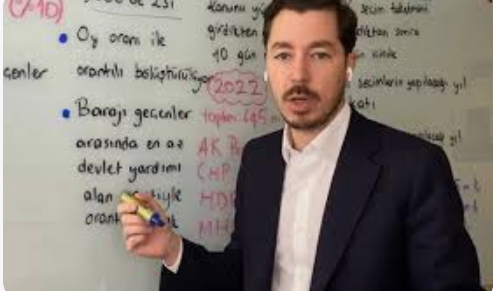The local elections on March 31 produced results far beyond expectations. Immediately after the election, evaluations suggested that the main determinant of CHP’s victory was low AKP turnout. However, a ballot-based analysis points to a different picture.
Target 2028: Alliances Starting Over
Developments after the May elections revealed a scene where the opposition Nation Alliance dissolved, but the People’s Alliance remained together. However, looking at the number of candidates and the places they were nominated for the elections, we see that the change is not only on the opposition side. For example, the Yeniden Refah Party (New Welfare Party), the star of the election, became one of the top 5 parties with the most candidates by nominating over 900 district candidates.
On the other hand, AKP and MHP nominated candidates in over 300 districts simultaneously. Moreover, in the 378 districts where CHP nominated candidates, the (pro-Kurdish) DEM Party did not. Thus, each party’s position in this election, in preparation for the 2028 elections, presented a very different picture from the national alliance structure.
CHP’s Candidate Selection Method
High-profile mistakes that came to public attention, especially in Hatay, created the perception that CHP’s candidate selection process was disorganized. However, we now understand that despite the mistakes, the process was systematically carried out and successful, generally combining the general staff’s intelligence with frequent surveys.
Who Voted for Whom?
Let’s answer the question we initially asked. When comparing the 2023 and 2024 elections on a ballot basis, we see that about 30 percent of the voters who voted for AKP in May 2023 did not vote for AK P in this election. This 30 percent is divided into three main blocks. Approximately 2 million AKP voters did not go to the polls, while 1.5 million voted for CHP and 1.4 million for Yeniden Refah Party. Therefore, of the approximately 5 million voters who voted for AKP in 2023 but not in this election, 3 million chose two other parties. This result shows that while the AKP voters who did not vote constitute a significant group, they are not the only factor explaining the ballot success of CHP and YRP. 1.4 million voters who did not vote in 2023 chose CHP in this election. Undoubtedly, a significant part of this electorate consists of young people voting for the first time.
In summary, looking at the national level, we see that the main determinant of CHP’s victory is not low AKP turnout. Certainly, the decrease in participation in specific election districts played a role in losing mayorships, but the votes CHP received from AKP, İYİ Party, and new voters were the main elements of the election success.
